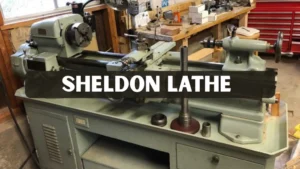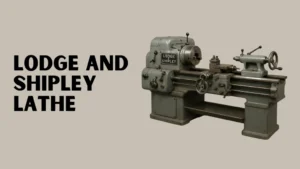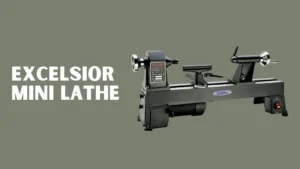Mini lathes are good for your projects? Delve into the excellence of mini lathes, exploring their quality, features, and suitability for your crafting and machining endeavors.
Mini Lathes: Are They Any Good?
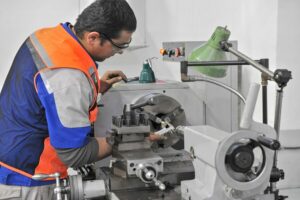
In the world of machining and crafting, precision and versatility are paramount. Whether you are an experienced artisan or a budding DIY enthusiast, the right tools can make all the difference. One such tool that has been gaining popularity among craftsmen is the mini lathe.
1. Motor Power:
- 1/2 to 3/4 HP: Most mini lathes come equipped with a 1/2 to 3/4 horsepower motor, providing ample power for a wide range of tasks.
- 1 HP Options: Some models offer 1 HP motors, delivering even more robust performance.
2. Variable Speed Control:
- Up to 2500 RPMs: Mini lathes typically offer speeds of up to 2500 revolutions per minute (RPMs). This variability is crucial for tailoring the machine’s performance to different materials and projects.
3. Compact Size:
- Perfect for Small Workpieces: Mini lathes are well designed for handling workpieces ranging from 4 to 7 inches in diameter and up to 3.5 inches in radius. This makes them ideal for intricate, small-scale projects.
4. Precision Turning:
- Accuracy: Mini lathes are good for precise turning, allowing you to achieve intricate details and fine finishes on your workpieces.
- Smooth Operation: The compact size and well-balanced design of mini lathes ensure smooth and controlled operation, minimizing errors.
5. Versatility:
- Metal Turning: Mini lathes excel at turning metal pieces, making them valuable assets for machining tasks involving various metals.
- Woodworking: Despite their name, mini lathes can also be used for woodworking projects, showcasing their versatility.
6. Durable Construction:
- Sturdy Build: Mini lathes are well crafted with durability in mind, featuring robust components that can withstand regular use in your workshop.
Understanding Mini Lathes
A mini lathe, in essence, is a compact, benchtop lathe with specific size parameters. Typically, it has a distance of 20 inches or less between the lathe chuck and the tailstock and a swing over the bed of 12 inches or less. The swing represents the largest workpiece diameter that can be accommodated on a mini lathe.
These miniature powerhouses come equipped with a 1/2 to 3/4 HP motor and a spindle bore diameter ranging from 1.0” to 1.5”. Despite their smaller size, they feature all the essential components found in their full-sized counterparts. This includes a tool post, lathe chuck, cross slide, centers, steady rest, and tool holder. In terms of versatility, mini lathes use the same tooling as larger lathes, including carbide and high-speed steel (HSS) lathe tools, parting tools, turning tools, and threading tools.
Different Parts Of A Mini Lathe
To understand the capabilities of a mini lathe fully, it’s essential to familiarize yourself with its different components:
1. Headstock: This is where you’ll find the center spindle, speed control system, and gearbox. The spindle plays a crucial role in extending long bars during machining, reducing material waste.
2. Bed: The bed is the extensive feature attached to the headstock. It ensures that the tailstock and carriage are perfectly aligned with the spindle’s axis. Properly leveling the bed during installation is essential for achieving accurate cutting angles.
3. Carriage: The carriage holds the tool bit and is one of the most frequently used parts of the lathe. It allows users to control movement both horizontally and vertically, and some models even include a handwheel for managing the feeding mechanism.
4. Tailstock: Located at the opposite end of the headstock, the tailstock features a taper designed to hold drill bits and other tools. Adjusting its position according to the angle of your workpiece is crucial for precise operations.
Benefits of Mini Lathe
Now that we’ve covered the basics let’s delve into the benefits of using a mini lathe:
- Mini lathes come at a fraction of the cost of full-sized lathes, making them an attractive choice for those on a budget.
- Replacement parts and upgrades for mini lathes are considerably less expensive than their larger counterparts.
- Most precision mini lathes offer variable speed control, allowing you to tailor the machine’s performance to your specific needs.
- These lathes are equally adept at handling metal and wood-turning tasks, offering a wide range of possibilities for different projects.
- Most mini lathes operate on 110V power, making them suitable for various workshop setups.
- Many benchtop models are compatible with CNC technology, simplifying complex tasks and eliminating the need for manual cutting tools.
- High-speed mini lathes are good for precision polishing and sanding operations, enhancing the quality of your work.
- Mini lathes often come equipped with thread indicators, allowing you to turn screw threads with ease, whether in metric or imperial measurements.
- Tooling packages for mini lathes typically include quick-change tool posts, enhancing convenience and productivity.
- Many mini lathes feature powerful brushless motors, ensuring smooth and efficient machining.
What are the Capabilities of a Mini Lathe?
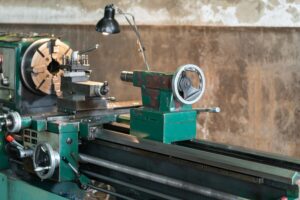
The capabilities of a mini lathe are surprisingly vast. You can turn and face most metals up to 2.75 inches in diameter using a 3-jaw chuck. For smaller parts, you can turn down a brass piece to a mere 0.050 inches in diameter, drill tiny holes through it, and use a parting tool to cut it off. With non-ferrous metals like aluminum and brass, you can even take .040-inch cuts (.080-inch diameter) without any issues.
Moreover, mini lathes are good not limited to metals; they can work effectively with plastics such as Delrin, Nylon, Acetal, and Teflon. For woodworking enthusiasts, these lathes can also be used for crafting intricate wooden items like pens, bowls, and candlestick holders. The possibilities are virtually endless, making a mini lathe a versatile addition to your workshop.
What can you do with a Mini Lathe?
The true beauty of a mini lathe lies in its versatility. Here are some practical applications:
- Tool Making: Craft custom tools like screwdrivers, chisels, and more to suit your specific needs.
- Parts Fabrication: Create precise parts for machines or projects, including gears, bolts, or engine components.
- Artistic Creations: Let your creativity shine by crafting jewelry, decorative items, or sculptures with the precision of a mini lathe.
- Woodworking: Despite being primarily designed for metalwork, mini lathes can also be used for woodworking, allowing you to make pens, bowls, and other wooden creations.
- Repair Work: Use your mini lathe to replicate and replace damaged or worn-out parts, ensuring a perfect fit.
Mini Lathe Tips for Using
If you decide to invest in a mini lathe, here are some valuable tips based on experience:
- Secure Your Lathe: Bolt your mini lathe down to a sturdy frame or workbench to prevent unwanted movement during operation.
- Initial Tuning: Spend time fine-tuning and familiarizing yourself with your lathe. It’s worth the effort to ensure it operates optimally.
- Spindle Speed: When starting the spindle, begin with the RPM turned down, then gradually increase it. This gentle approach extends the life of your lathe’s components.
Conclusion
Mini lathes are indeed a valuable addition to any workshop. Their cost-effectiveness, versatility, and capabilities make them a practical choice for a wide range of projects, from precision machining to creative endeavors. By following proper usage tips and getting to know your mini lathe, you can unlock its full potential and take your craftsmanship to new heights. Whether you are a hobbyist or a professional, a mini lathe can be a game-changer in your workshop.
FAQ’s
Can Mini Lathes Handle Larger Workpieces?
Mini lathes are well suited for workpieces within a specific size range (4 to 7 inches in diameter and up to 3.5 inches in radius). Attempting to work on significantly larger pieces may compromise precision and safety.
Are Mini Lathes Suitable for Beginners?
Yes, mini lathes are good for beginner-friendly due to their compact size and user-friendly design. They often come with clear instructions and safety features, making them accessible to those new to machining and crafting.


